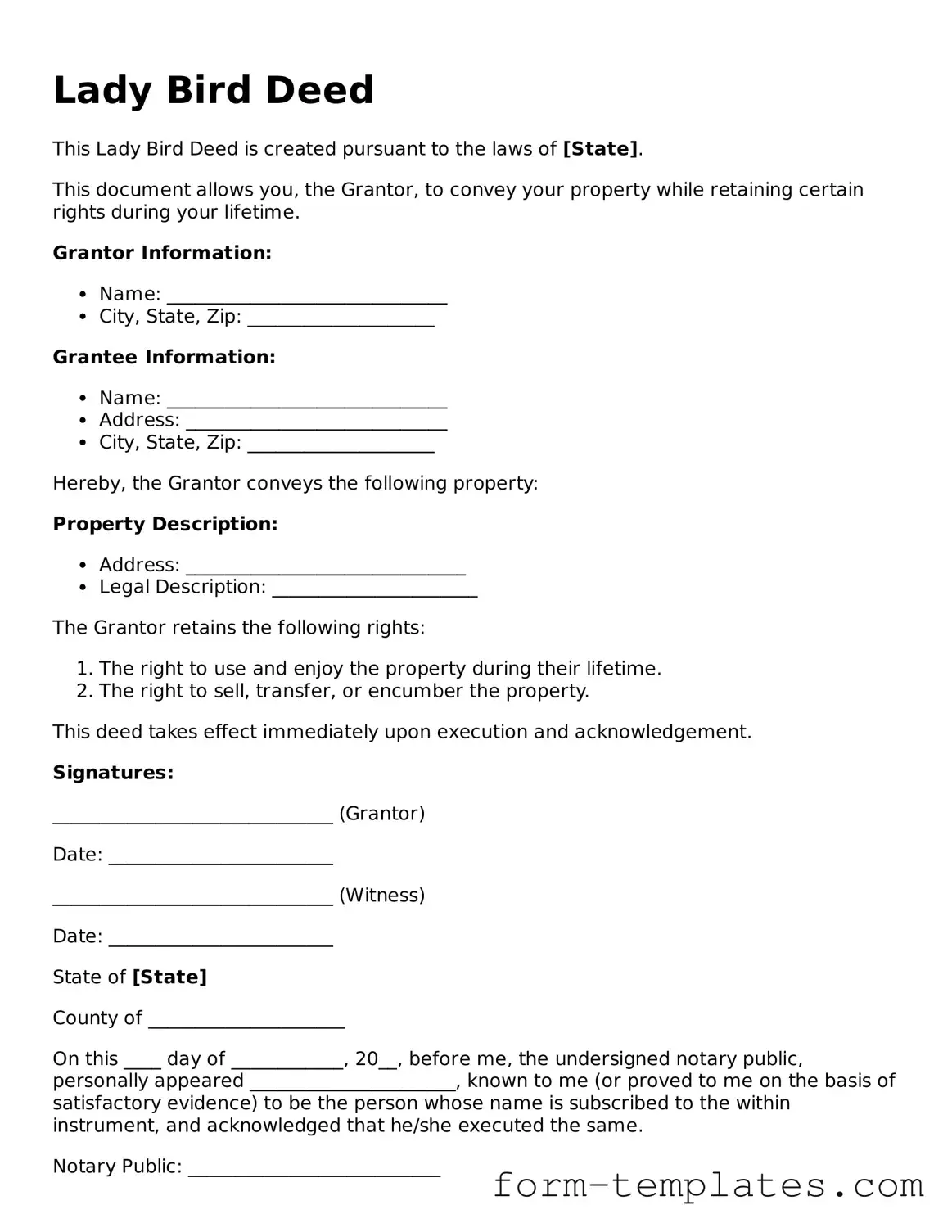Lady Bird Deed
This Lady Bird Deed is created pursuant to the laws of [State].
This document allows you, the Grantor, to convey your property while retaining certain rights during your lifetime.
Grantor Information:
- Name: ______________________________
- City, State, Zip: ____________________
Grantee Information:
- Name: ______________________________
- Address: ____________________________
- City, State, Zip: ____________________
Hereby, the Grantor conveys the following property:
Property Description:
- Address: ______________________________
- Legal Description: ______________________
The Grantor retains the following rights:
- The right to use and enjoy the property during their lifetime.
- The right to sell, transfer, or encumber the property.
This deed takes effect immediately upon execution and acknowledgement.
Signatures:
______________________________ (Grantor)
Date: ________________________
______________________________ (Witness)
Date: ________________________
State of [State]
County of _____________________
On this ____ day of ____________, 20__, before me, the undersigned notary public, personally appeared ______________________, known to me (or proved to me on the basis of satisfactory evidence) to be the person whose name is subscribed to the within instrument, and acknowledged that he/she executed the same.
Notary Public: ___________________________
My Commission Expires: __________________
